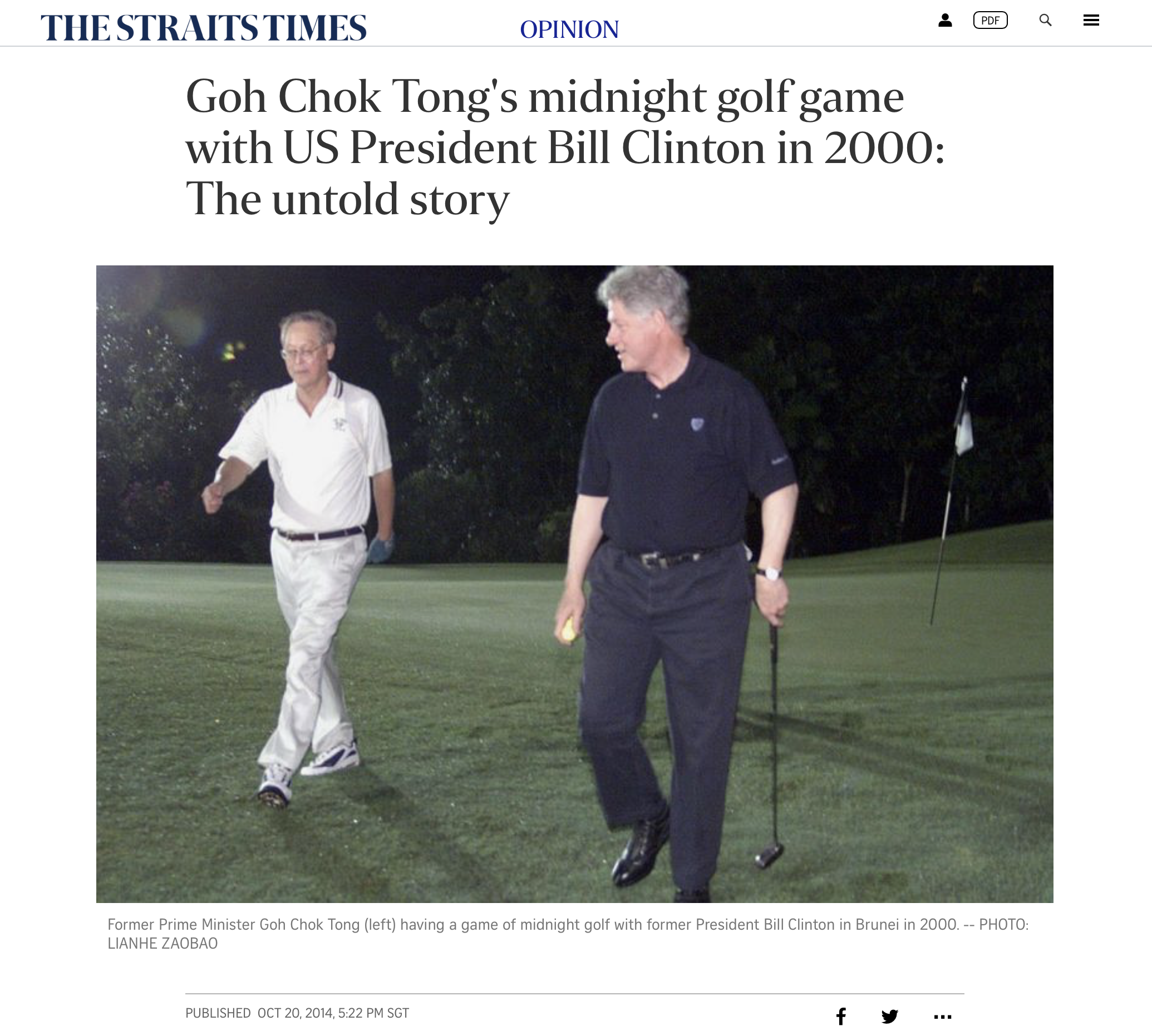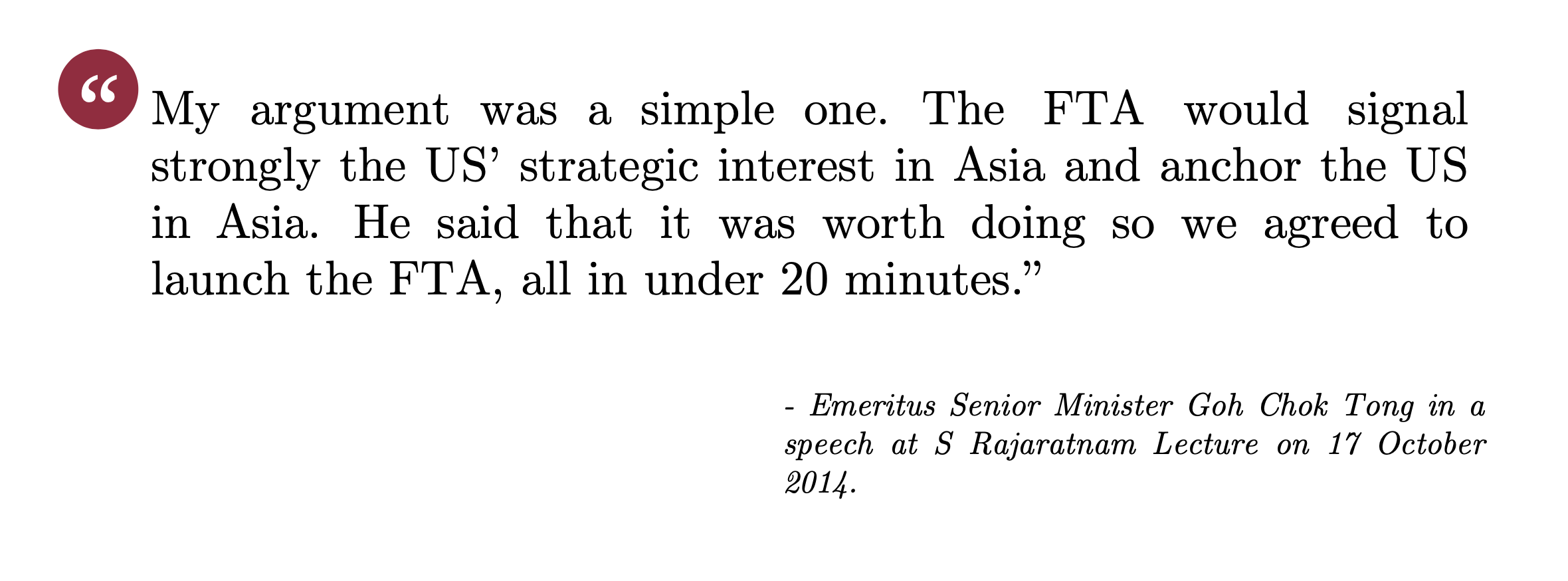The Singapore-US FTA: Sealed Over a Game of Golf
Digging Deeper: Case Studies
The Singapore-US FTA: Sealed Over a Game of Golf
3 minute read

The late-1990s was a difficult time for Singapore. Our economy was still struggling after the Asian Financial Crisis, and global outlook was grim. Moreover, the Doha Talks by the World Trade Organisation (WTO) had stalled.
Faced with dim prospects, Singapore decided that it had to chart its own economic future by pushing for free trade agreements with its key trading partners, said former Prime Minister Goh Chok Tong in 2014.
Singapore had an ambitious plan to signal its intention – seal an FTA with the world’s largest economy, the United States. However, Singapore’s relationship with the White House was at a low point at the time.
Singapore had angered the US government after we sentenced American teenager Michael Fay to six strokes of the cane for vandalism and theft.
The US government pressured Singapore for clemency for Fay but the Singapore government stood its ground, insisting that Singaporeans would also be given the same sentence if found guilty of the same crime.
Nonetheless, then-President Ong Teng Cheong reduced the number of strokes from six to four out of respect to then-US President Bill Clinton. Many US lawmakers criticised the decision and the White House thus refused to let PM Goh meet with President Clinton.
However, PM Goh found his way in through a game of golf. President Clinton, a keen golfer, had learnt about PM Goh’s passion for golf from a mutual friend. So when the opportunity presented itself in 1997 during an Asia-Pacific Economic Cooperation (APEC) Leaders’ meeting in Vancouver, both leaders came together for a game of golf.
That set the stage for further discussions, which took place again on the green at the 2000 APEC Leaders’ meeting in Brunei. There,18 PM Goh approached President Clinton to ask if he would be up for a game of golf. President Clinton said yes.
After their game, PM Goh made his pitch:

The US-Singapore FTA was officially signed in 2003 and implemented a year later. It was the first FTA signed between the US and an East Asian nation. The FTA removes tariffs and allows for better movement of goods between the two nations.
The FTA was also a powerful signal to the rest of the world, and showed that despite its size, Singapore could persuade the world’s biggest economy to sign an FTA. This FTA set an important precedent for future negotiations.

